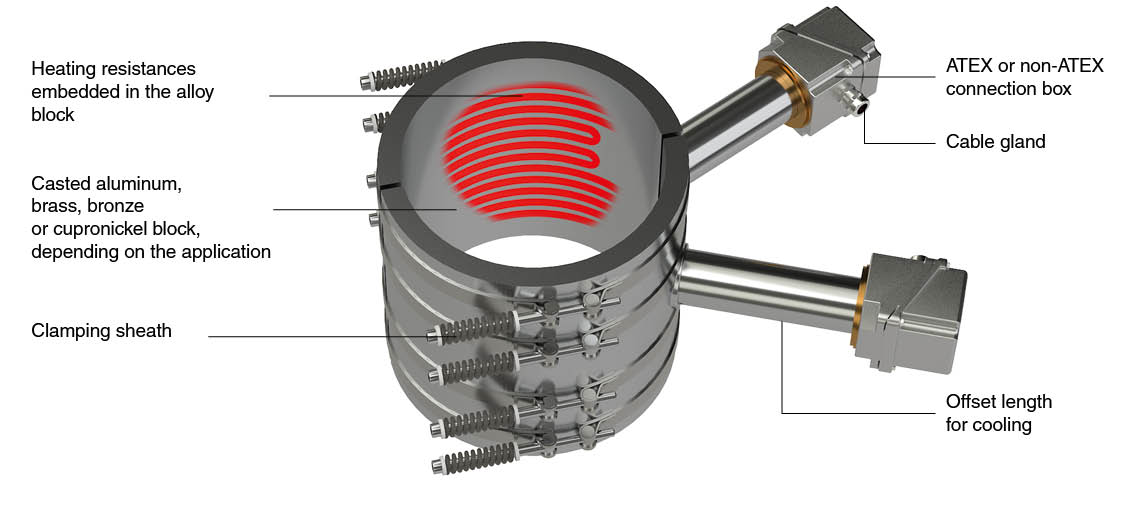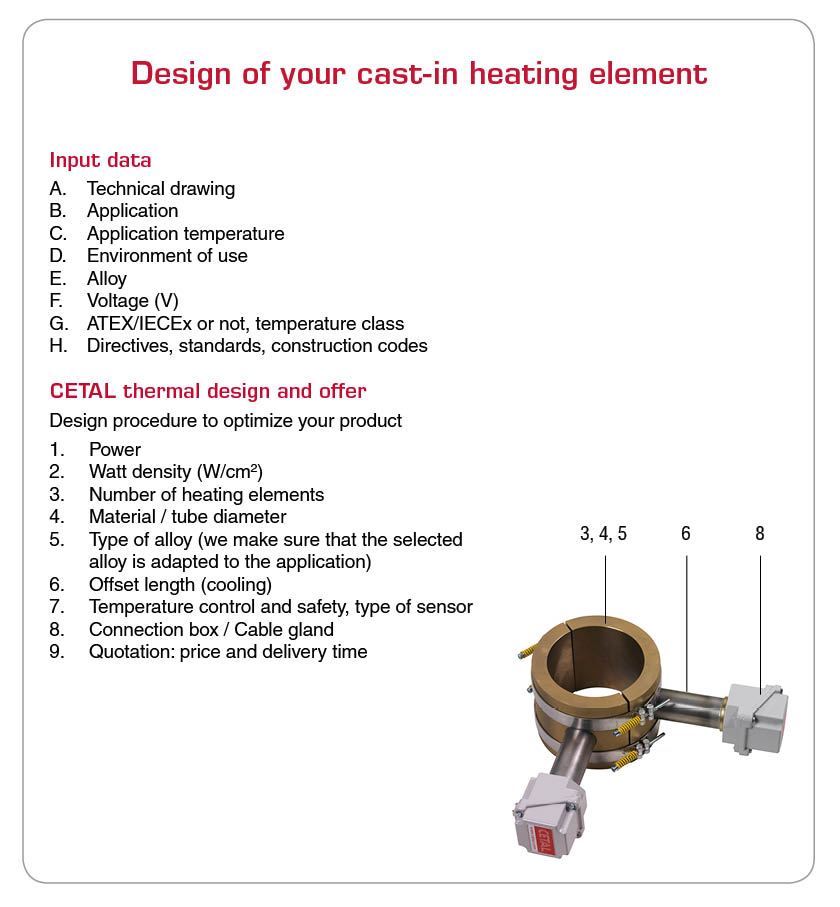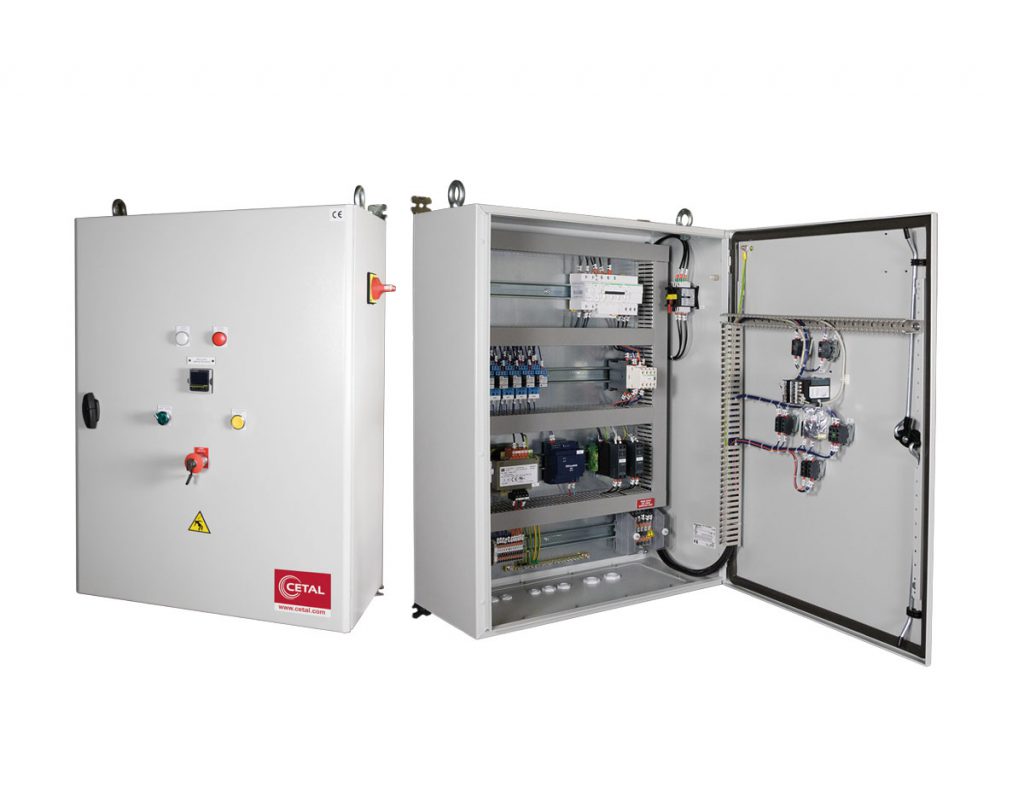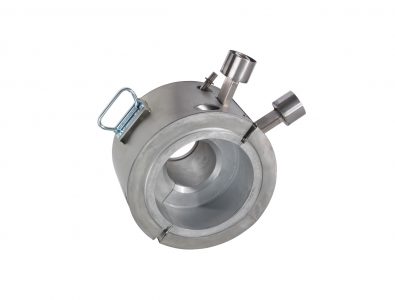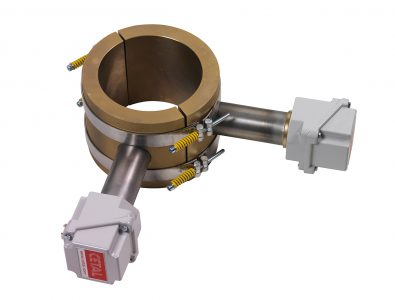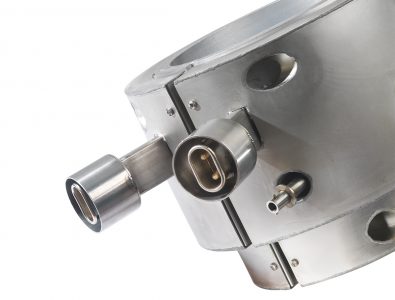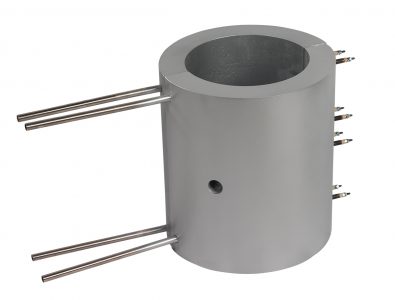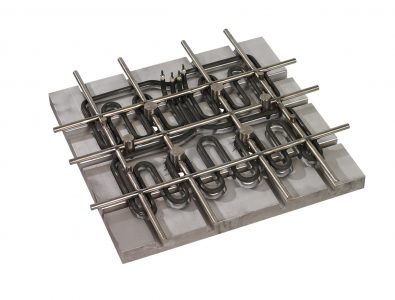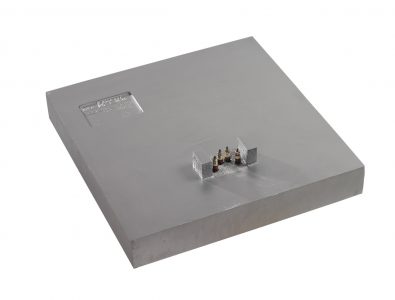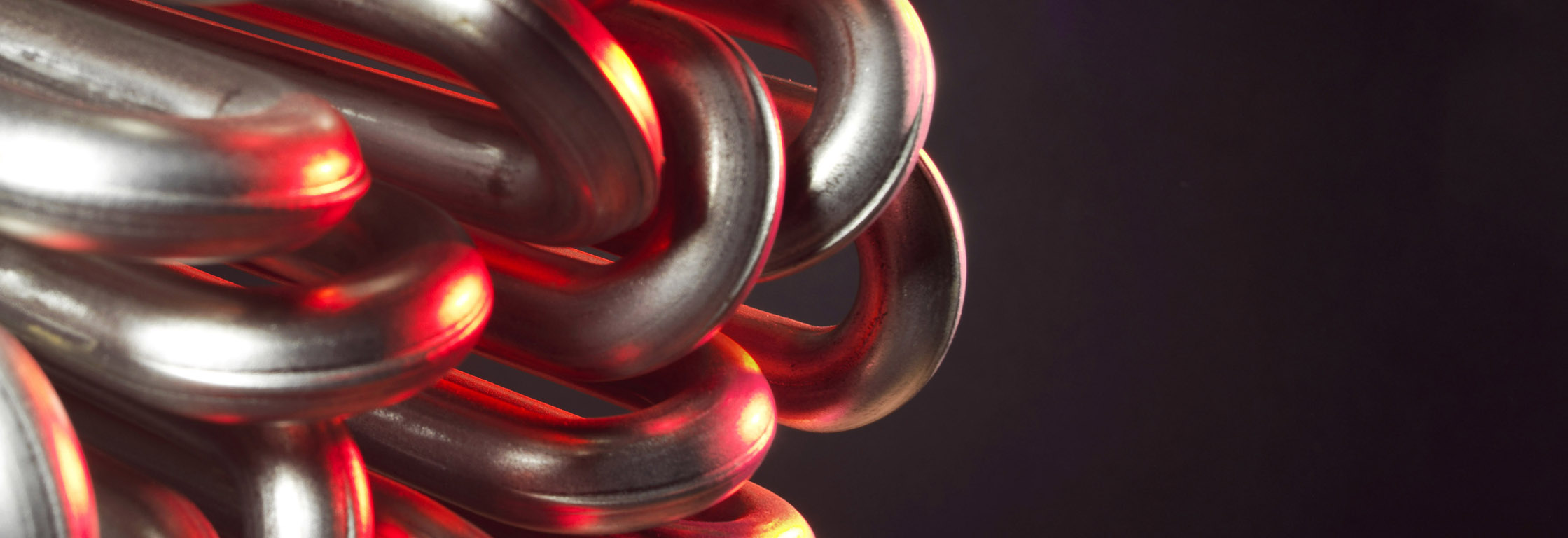
Cast-in heaters
Product overview
- Indirect heating
- Block of aluminum, brass, bronze or cupronickel alloy
- Process temperature up to +400°C (aluminium), +650 °C (cupronickel). Maximum +750°C
- Max Watt density 20 w/cm² on the heating element
- Maximum weight: aluminium 400kg / cupronikel 300kg
- Can be equipped with cooling circuits to optimize the industrial process
Advantages
- Gravity moulding ensures an excellent material homogeneity and thus a perfect heat transfer.
- Constant surface temperature is achieved through appropriate forming.
- As this is indirect heating, the heating resistance is protected. The solid or fluid to be heated is not in contact with the resistance.
- High protection against corrosion
- The end-to-end control of the design and production chain allows us to deliver a product which suits your process perfectly
- Resistance in severe industrial surroundings (impacts, vibration)
Operating conditions
- Normal (non-ATEX)
- Hazardous areas (ATEX/IECEx) and NEC 505
- Extreme environments: – 60°C to + 80 °C
- Onshore / Offshore environment
- Salt atmosphere
Solids
- Aluminium, brass, Bronze cast in, max load 4 – 15W/cm², material: 309
- Copper-nickel cast in, max load 5 – 10W/cm², material: 309
Technical description
The Watt density, tube diameter and the tube sheath are chosen to optimize the reliability and robustness (corrosion, temperature) of CETAL equipments.
Technologies
- Tubular heating element (most fo the cases)
- Heating rods into sleeve
Tube diameter & material
- Tube diameter: 6.5 / 8.5 / 10 / 13.5 / 16 mm
- Tube material: Stainless steel AISI 321 (1.4541) / AISI 316L (1.4404) / AISI 309 (1.4828)
- Tube type: sealed tube, seamless tube (on request)
Manufacturing
- 100% of the components come from our high-quality suppliers from Europe
- 100% manufacture within CETAL factory

- Connection terminals
- Tube
- Insulation : magnesia oxyde (Mg O), to secure optimized heat transfer and electrical insulation.
- Resistance wire: Made of Nickel Chrome 80/20, it is the active part of the heating element (Joule effect)
- Cold length
- Sealing material: Keeps out external moisture. Different types (silicon, resins, cement) are used depending on the industrialapplication, the external medium and temperature.
- Output insulation: Made of steatite ou corundum, it provides dielectric insulation (creepage distance, distance in the air).
- Heating elements can be fixed on a screw or flange or simply fixed to mechanical structure such as for cast-in plate as illustrated.
- Aluminium : Up to temperatures of 400 °C, the most widely used alloy.
- Brass (600°C), bronze (650°C) or cupronickel (650°C – 750°C) for higher temperatures or in case of mechanical stress.
- Heating elements can be fixed on a screw or flange or simply fixed to mechanical structure such as for cast in plate as illustrated.
- The elements can be supplied without enclosure for cabling on the customer’s premises.
- Non ATEX connecting box
- IP 54 / IP 66 / IP 67
- Material: painted steel, stainless steel, aluminium
- Polyamide or nickel-plated
- ATEX/IECEx connecting box
- Explosion-proof connecting box, aluminium, stainless steel or painted steel, Ex d IIC
- Stainless steel increased security enclosure,Ex e IIC
- Nickel-plated brass cable gland (stainless steel as option)
- Fluid temperature <110°C, no offset
- Fluid temperature >110°C, offset between the protecting box and the tank is recommended
- Temperature sensors (thermostat, limiter, thermocouple or PT100) in the alloy block (process control) or on the heating elements (safety control).
- Voltage: VAC or VCC
- Cabling according to main voltage VAC/VCC 1PH + N or 3PH
- Power : a few Watt to several Megawatts
- Standard documentation
- Certificate of conformity to the order
- Heater wiring diagram
- Instruction manual
- On-request documentation
- Supplied according to directives, standard and construction code
- Welder qualifications (QS)
- Welding qualifications (QMOS)
- PED documentation
- Material certificate 3.1 according to NF EN 10204
- The heating assemblies are machined according to technical drawings and take into account tolerance values and surface finishing requirements.
- Manufactured according to specifications in small or medium-sized production runs.
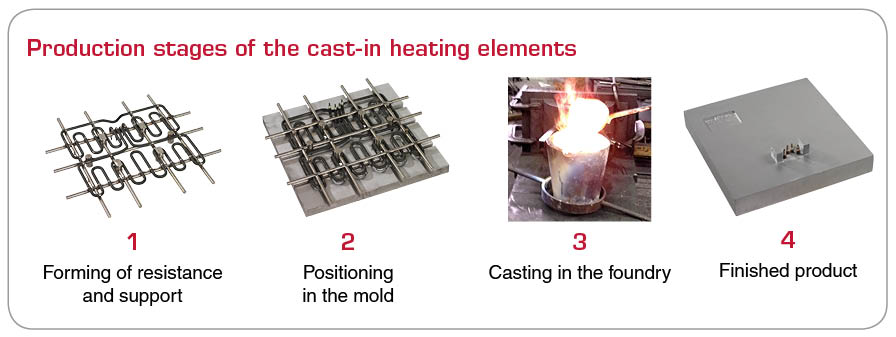
- According to CE European directives and CE market (for Europe)
- ATEX/IECEx certificate for component or system
- EAC CU TR, c CSA us (NEC 505)
![]()
Electrical tests
- Power test by cold resistance measurement. Allowed tolerance: -5% and +10% of the nominal resistance value.
- Insulationtest, direct voltage 500 V, mini cold value is > 100 Megohms
- Dielectric test, (2U + 1000 V) x 1,2 during 1 second
- The stray current and the hot dielectric rigidity can be measured on a sample at operating temperature (on request).
- 100% of the heating elements are tested before shipment (Final control)
Mechanical tests
- Visual inspection
- X-ray test (if required)
- Liquid penetrant test
- Pressure control test
Dimensional test
- Critical dimension are tested
Other tests / operations
- Degreasing
- Argon cleaning
Third party
- Third party inspection (on request)
- Temperature control : Temperature sensors (thermostat, limiter, thermocouple or PT100) in the medium (process control) or on the heating element (safety control), on the flange or in the connecting box.
- Separate connecting box for temperature control out of the power connecting box
- Stainless steel material for ATEX/IECEx cable gland
- Space heaters against moisture inside the connecting box
- Coating for the connecting box customized specifications and colors
- Tropicalization: Adapted materials and components, heat-shrink insulated terminals, for extreme atmospheres (moisture, temperature)
- Insulation: according to design if needed
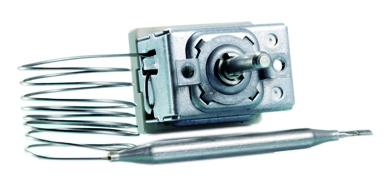
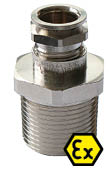
Standard power control panels
CETAL offers a large range of cost-effective power control panels.
Injection / extrusion applications

Realizations
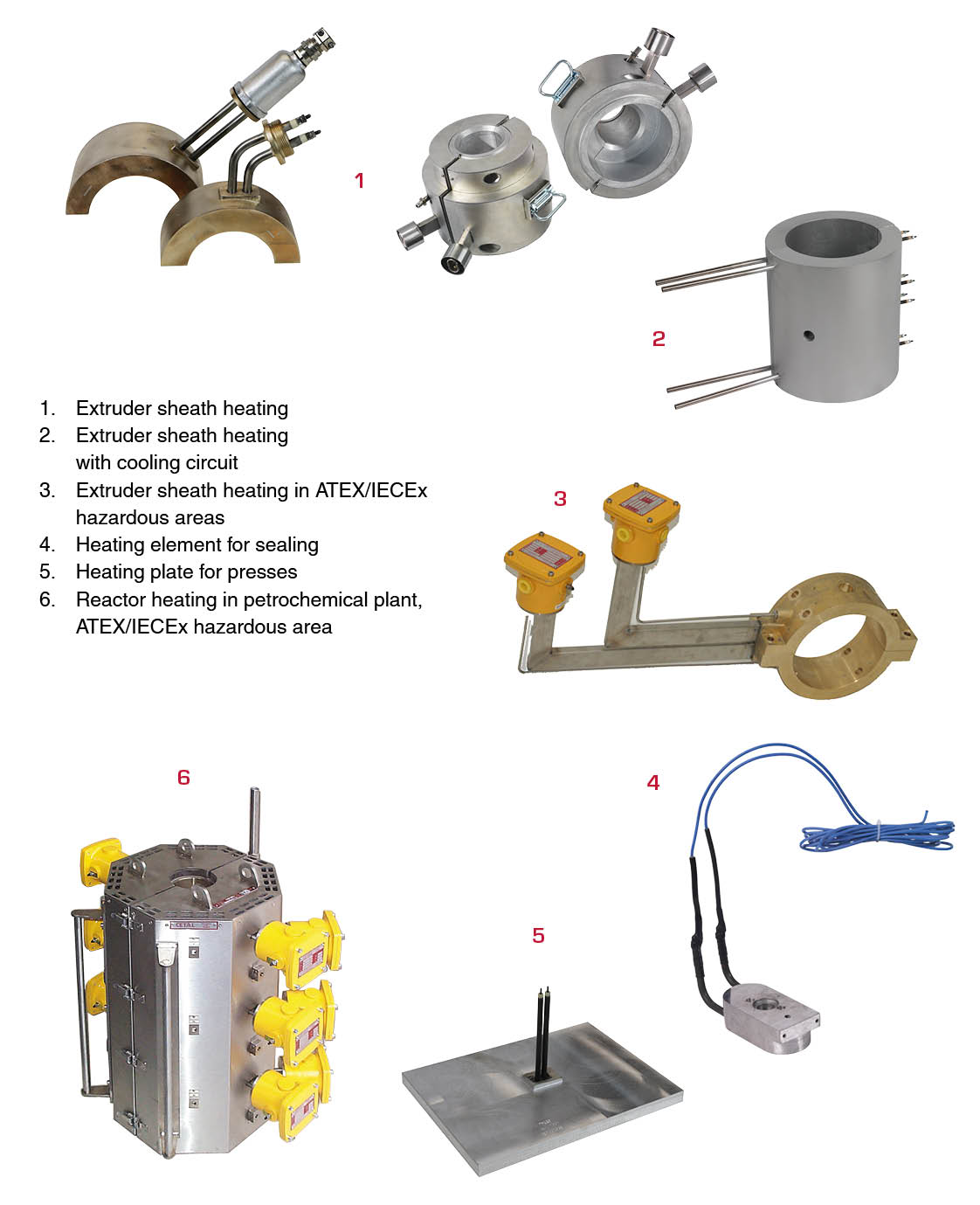
In addition to heater design, the use of specifically developed connection boxes allows to install the products in hazardous areas.
The increased safety protection mode “e” (EN60079-7) or the explosion-proof protection mode “d” (EN 60079-1), together with temperature control acc. to EN 60079-0, make it possible to operate the equipments in hazardous area (zone 1 and zone 2) for gases of the A-B-C groups.
Type of protection “d” explosion-proof housing
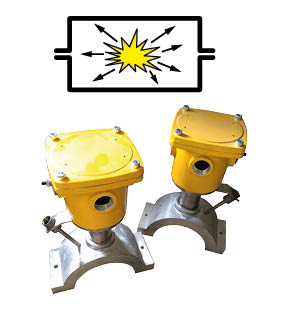
With this method, the housing (casing):
- Must contain the explosion within the enclosure
- Make sure that the ignition cannot reach the hazardous area
- Always keep an external temperature lower than the auto-ignition temperature of any surrounding
The following factors are selected depending on the internal free volume of the enclosure and the gas present in the area.
- Type of seal (cylindrical, flat, threaded)
- Seal length
- Gap length
The power and temperature control circuits can be accommodated in separate housings
Type of protection “e” increased safety
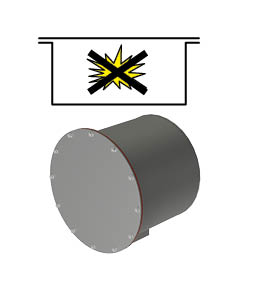
Method: To prevent the occurrence of any accidental ignition source (electric arcs, heating).
This mode of protection is achieved by:
- Selecting high-quality insulating material
- Defining the right creepage distances
- Ensuring the quality of electrical connection
- For all classes of gases and vapours
- Suitable for connection housings

